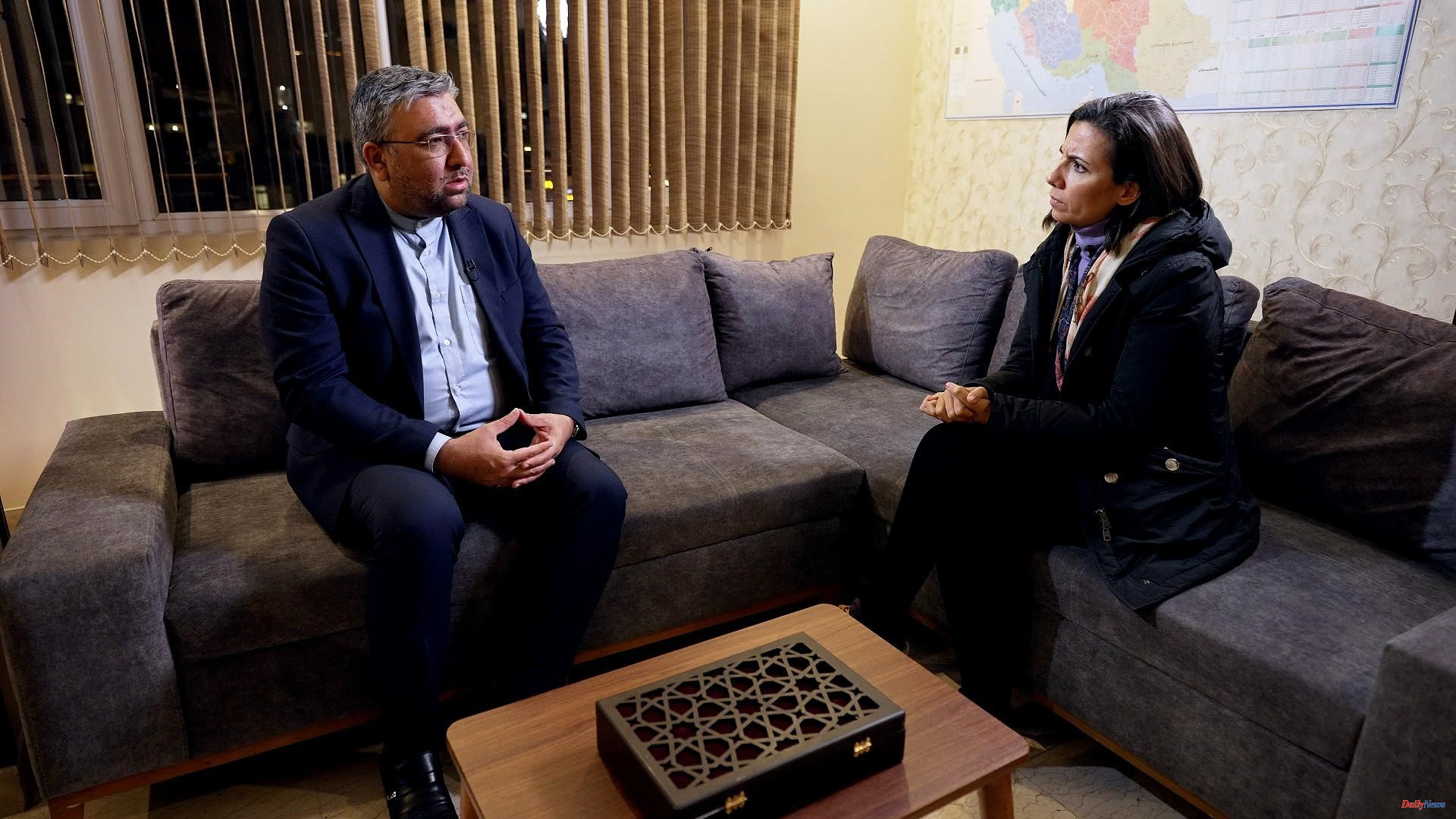Ana Pastor acknowledges that 10 years ago she was not aware of what her shocking interview with the then President of Iran, Mahmud Ahmadinejad, had meant, until she went online and saw all those headlines about how she was losing the hijab as the interview became more tense. increasingly.
Ten years after that moment, Ana Pastor returns to Iran in a special El Objetivo dedicated to what she now considers "the greatest icon of courage in feminism", Iranian women.
He assures that if that first time he was not aware of the fact that the Islamic veil was falling off or of what it was going to mean to assume, this time he has been aware and has wanted to honor all those women by wearing the same headscarf as then, but without no intention of putting it on.
"I was going with the idea of putting it on, but out of respect for them I decided not to do it and see what happened," the journalist explained to EL MUNDO. "As soon as we set foot on the street we had incidents with the Police all the time to be there and to record without wearing the veil," reveals Pastor.
In fact, throughout the special Ana Pastor does wear the scarf, she wears it around her neck, aware of what it means for Iranian women. It is the symbol of her struggle, but also the symbol of her oppression.
"We have done our job in the best possible way, but if you compare it with their lives, you have to be aware that we come and go. They don't. And if it has caused me so many problems doing my job, imagine what they live every day," he says.
Thousands of Iranian women have been defying the theocratic regime of the Islamic Republic of Iran and the law that requires them to cover their hair in public since September. Failure to do so has faced them since 1983 with jail terms and reprisals that extend to their families.
The outbreak followed the death in police custody on September 16 of Mahsa Amini, a 22-year-old Kurdish girl. She had been detained by the moral police for not wearing the veil correctly, according to the doctrine of the authorities. Amini's dramatic fate raised thousands and thousands of women like her who went out to the squares, burned her veils and cut locks of her sinful hair, in a gesture of indignation that has been seconded by women around the world.
It has not been an easy journey. Ana Pastor declares herself a feminist and assures that from the beginning of the year she and her team were clear that the Objective of 8M had to be by and for Iranian women. Because "right now there is no greater icon of courage in feminism than them."
In Iran, Pastor talks to women who refuse to comply with discriminatory laws and who are making him visible on the streets. In addition, he interviews, among others, the head of national security in the Iranian Parliament about the repression that has been unleashed by the protests, the arrests and even the hanging of several young people.
"It's a trip that has changed me a lot," he reveals. "It has upset me because I consider myself a feminist and sometimes I have the feeling that we are immersed in too advanced feminist debates if you compare it with the reality of Iranian women. Iranian society is an advanced society. They are educated women and despite this, they are in circumstances of total oppression," he says.
But the protests go beyond the veil. Iranian men have taken to the streets together with their companions and the marches represent the greatest challenge for the Iranian authorities since the massive protests of 2009 and 2019. And they go beyond the death of Amini, because they take root with a boil that you already lived months before in Iran
Thus, the journalist recounts that one of the moments that struck her the most was when, after interviewing a woman during the central act of the anniversary of the Islamic Revolution, a few minutes later she returned accompanied by a man, asked to be interviewed again and this time who dictated the answers was he. "It was surreal. Women living in an even more oppressive system and others who want to end it," she explains.
Ana Pastor remembers the encounter they had with a mother and daughter in one of the Tehran markets. "There was a mother and a daughter who stood in front of us when we were filming and the mother said 'you have to talk to her on camera'. She was a 20-year-old girl who was not wearing a veil, her mother was, and she was not. she had been detained many times. Her mother's look and face of pride shocked me a lot," says the journalist.
It is not only the veil, nor the arrests, nor the oppression, nor the fear, but also the attacks that girls have been suffering in schools since November: attacks with poisonous gas that have affected schools throughout the country and have left and more than a thousand affected students.
If you ask Ana Pastor what makes the feminist struggle of Iranian women different from, for example, Western societies or, in particular, ours, the journalist is very clear: "What they have taught me is to unite courage and the calm". "I have found many women who combined both virtues," she continues, "the courage and calm that they show in the feminist struggle that is often impossible to reconcile."
According to the criteria of The Trust Project












